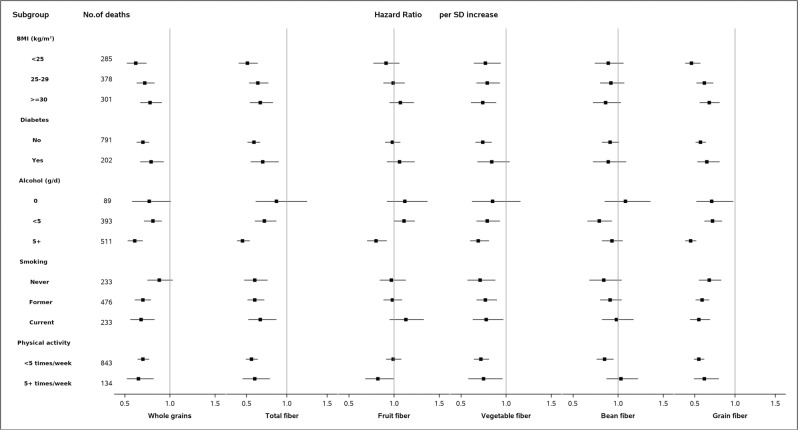Fig. 2. Stratified analyses for association between whole grain and dietary fiber intake with CLD mortality among the participants of NIH–AARP Diet and Health Study.
Cox proportional hazard regression models were used. All P-values were two-sided. Models were stratified by sex and adjusted for age at baseline (continuous), level of education (‘≤11 years’, ‘high school’, ‘vocational technology school ’, ‘some college’, ‘college/postgraduate’), race (‘non-hispanic white’, ‘non-hispanic black’, ‘hispanic’, ‘asian, Pacific Islander, or American Indian/Alaskan native’), BMI (‘ < 25’, ‘25–30’, ‘30 +’ , kg/m2), alcohol use (‘non-drinker’, ‘0.1–4.9’, ‘5–9.9’, ‘10 + ’, gram/day), tobacco smoking (‘never smoked’, ‘former smoker’, ‘current smoker’), physical activity (‘never’, ‘rarely’, ‘1–3 time per month’, ‘1–2 times per week’, ‘3–4 times per week’, ‘5 + times per week’), history of diabetes (‘no’, ‘yes’) and total energy intake (continuous), except when the variable is used for stratification. The P for interaction between whole grain or fiber intake and characteristics for stratification in CLD mortality were as follows: Whole grain: 0.01 for BMI, 0.07 for diabetes, <0.01 for alcohol use, <0.01 for smoking, and 0.73 for physical activity. Total fiber: 0.03 for BMI, 0.05 for diabetes, <0.01 for alcohol use, 0.96 for smoking, and 0.52 for physical activity. Fiber from fruits: <0.01 for BMI, 0.10 for diabetes, <0.01 for alcohol use, 0.97 for smoking, and 0.16 for physical activity. Fiber from vegetables: 0.83 for BMI, 0.11 for diabetes, 0.72 for alcohol use, 0.63 for smoking, and 0.76 for physical activity. Fiber from beans: 0.87 for BMI, 0.84 for diabetes, 0.23 for alcohol use, 0.07 for smoking, and 0.07 for physical activity. Fiber from grains: <0.01 for BMI, 0.13 for diabetes, <0.01 for alcohol use, 0.15 for smoking, and 0.40 for physical activity. Abbreviations: BMI body mass index; SD standard deviation; NIH–AARP National Institutes of Health–American Association of Retired Persons.

